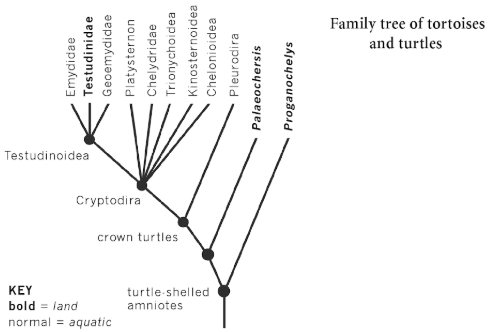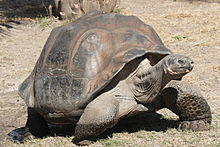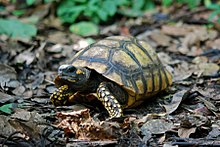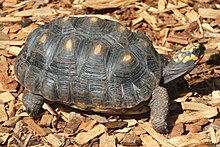Supplementary answer on regional terms.
Regional terms
The confusion between the British, American and Australian usage of the words turtle/tortoise etc1 2 3 stems from the different fauna encountered in each region. Naturally in Spanish too certain dialects have their own words for different species and groups of species of tortuga.
Many of the following terms, though specifically used for certain species, also serve in the dialects where they are used (via metonymy) as synonyms for any tortuga or any sea-turtle/river-turtle/tortoise:
Tortoises
Terrapins
| English |
Spanish |
Image |
| Terrapin |
jarico (Cuba) |
|
| South American Snapping turtle |
tortuga mordedora (Ec.) |
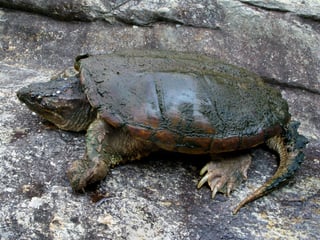 |
| Mata mata |
jicotea, hicotea (Mx:SE, RD, PR, Co, Ve.) Taino
icotea (Ho, ES, Pa, RD, Co, Ve.)
matamata (Co, Ec, Pe:E.) |
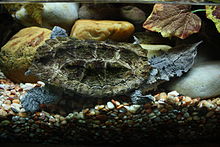 |
| D'Orbigny's slider |
morrocoy, morrocoyo (Ur.) |
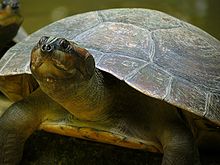 |
| South American River turtle |
charapa (Co, Ec, Pe)
galápaga (Co:E,S.)
tortuga arrau (Co, Ec.)
tortuga sabanera (Co) |
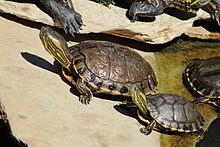 |
| Yellow-spotted river turtle |
capitari (Pe.)
terecay (Co, Ve.)
taricaya (Co, Ec, Pe.)
tartaruga (Ec, Bo:E.)
tortuga de agua (Bo:E.) |
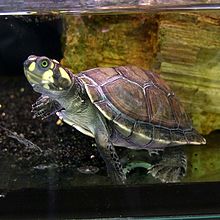 |
Sea turtles
| English |
Spanish |
Image |
| Hawksbill sea turtle |
carey (Mx, Ho, Cu, RD, PR; f. Pa.) Taino
caray (RD.)
peje colorado (PR.) |
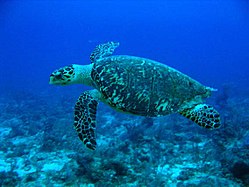 |
| Loggerhead sea turtle |
caguama (Mx, Ho, Ni, Cu, Co, Ve; m. PR, rur; m. Pa.) Caribe
cahuama (Mx.)
[tortuga] camagua (Ho, Ni.) náhuatl camahuac
cabezona (Ni.) |
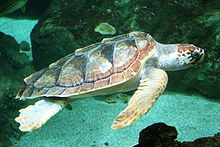 |
| Leatherback sea turtle |
tora (Ho, Ni.)
laúd (Mx, Ho, Ni, Pa.)
baula (Ho, CR)
tinglado (Cu.) |
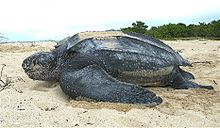 |
| Green sea turtle |
jaco (Cu.)
tortuga verde (Ho, PR, Ec.)
carey blanco, peje blanco (PR.) |
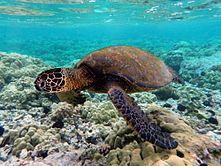 |
Source:
South American Tortoises
Notes:
1. https://en.wikipedia.org/wiki/Tortoise#Terminology
2. https://en.wikipedia.org/wiki/Turtle#Turtle,_tortoise,_or_terrapin
3. The Greatest Show on Earth, Dawkins (p.174)
Before going any further, I can't escape a tiresome point of terminology, and a regrettable vindication of George Bernard Shaw's observation that 'England and America are two countries divided by a common language'. In Britain, turtles live in the sea, tortoises live on land and terrapins live in fresh or brackish water. In America all these animals are 'turtles, whether they live on land or in water. 'Land turtle' sounds odd to me, but not to an American, for whom tortoises are the subset of turtles that live on land. Some Americans use 'tortoise' in a strict taxonomic sense to refer to the Testudinidae, which is the scientific name for modern land tortoises. In Britain, we'd be inclined to call any land-dwelling chelonian a tortoise, whether it is a member of the Testudinidae or not (as we shall see, there are fossil 'tortoises' that lived on land but are not members of the Testudinidae). In what follows, I'll try to avoid confusion, making allowance for readers in Britain and America (and Australia, where the usage is different again), but it's hard. The terminology is a mess, to put it mildly. Zoologists use 'chelonians' for all these animals, turtles, tortoises and terrapins, whichever version of English we speak.
As you can see from this diagram (p.177), aquatic chelonians ("turtles") is not monocladistic:
